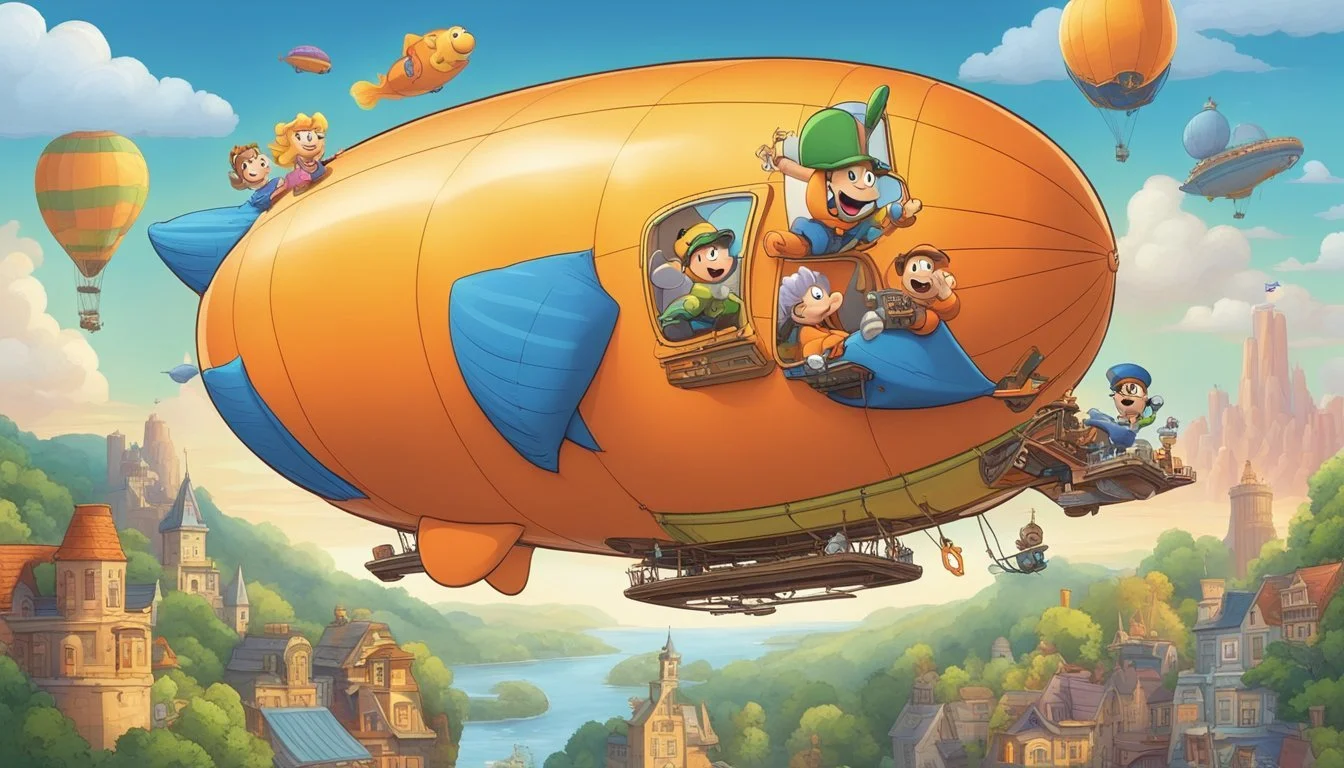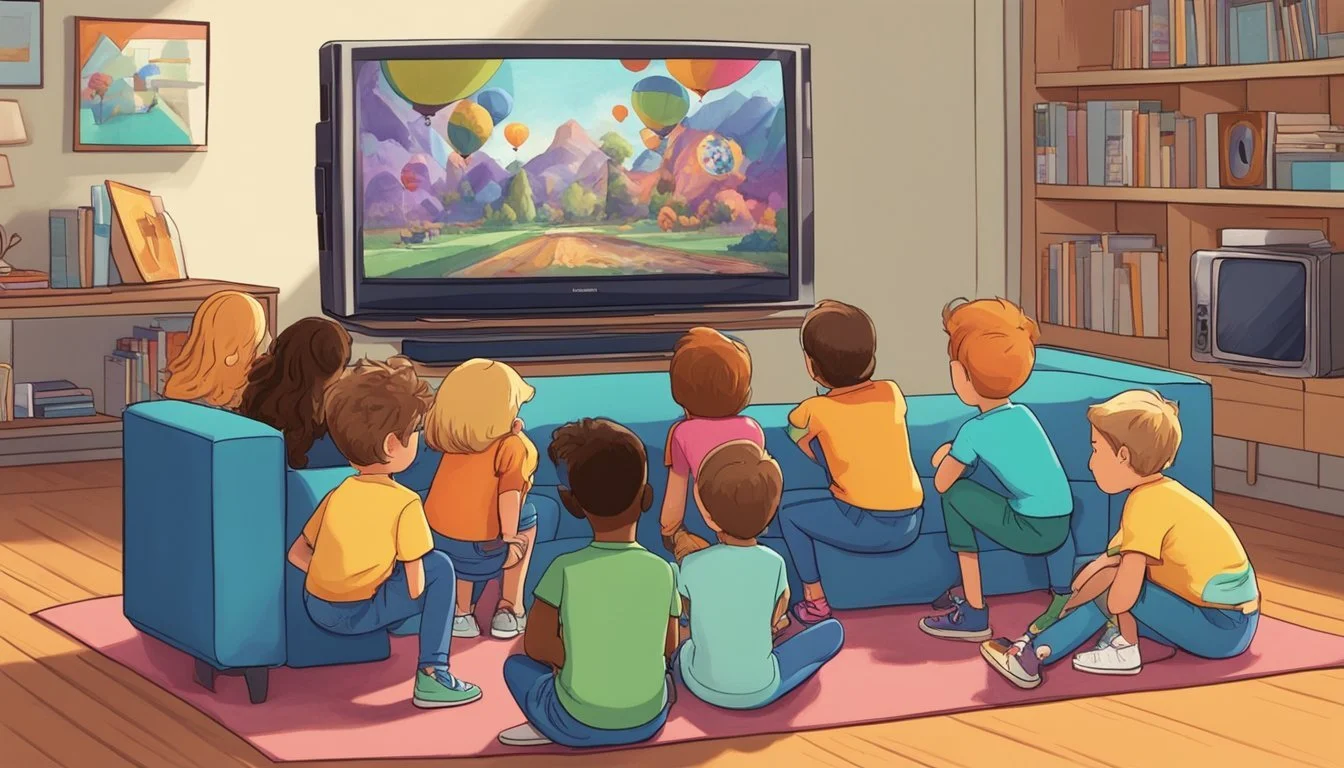Nickelodeon's Dark Secret: Child Stars Speak Out in Shocking Exposé
A recent documentary series has brought renewed attention to the darker side of children's television production. "Quiet on Set: The Dark Side of Kids TV" explores the behind-the-scenes culture at Nickelodeon during the 1990s and 2000s. The four-part series reveals allegations of toxic work environments, abuse, and misconduct involving both child actors and adult staff members.
The documentary focuses heavily on the tenure of Dan Schneider, a prolific producer and showrunner at Nickelodeon during this period. Former stars, crew members, and writers share their experiences and reactions to the revelations presented in the series. Some of the most shocking claims involve convicted child molesters who had worked on Nickelodeon productions.
"Quiet on Set" has sparked widespread discussion about the treatment of young performers in the entertainment industry. The series aired on Investigation Discovery in March 2024, shedding light on a period of television history that many viewers remember fondly from their childhoods. Its impact continues to reverberate through the industry, prompting calls for increased protections and oversight for child actors.
Origins of Nickelodeon
Nickelodeon emerged as a pioneering cable network dedicated to children's programming in 1979. It began as C-3, an educational channel for preschoolers, before rebranding to its iconic name.
The network's early years focused on commercial-free content, setting it apart from other broadcasters. Nickelodeon's programming initially consisted of imported shows and reruns of older series.
In 1984, Geraldine Laybourne joined the network and played a crucial role in shaping its future. Under her leadership, Nickelodeon embraced original content creation and developed a unique brand identity.
The network's commitment to putting kids first became a cornerstone of its philosophy. This approach led to the creation of beloved shows that resonated with young audiences.
Nickelodeon's growth accelerated in the 1990s with the introduction of live-action series. Programs like "All That" and "The Amanda Show" showcased young talent and helped launch numerous careers.
The success of these early shows paved the way for future hit series. "iCarly," "Victorious," and "Zoey 101" continued the tradition of youth-focused content in the 2000s.
Nickelodeon's origins as a small, educational channel transformed into a cultural phenomenon. Its innovative approach to children's entertainment revolutionized kids' TV and established a lasting legacy.
Documentary Genre and Methodology
Documentaries about Nickelodeon utilize specific techniques to explore the network's history and impact. These productions blend archival footage, interviews, and investigative approaches to create compelling narratives.
Defining the Docuseries
Docuseries about Nickelodeon often span multiple episodes, allowing for in-depth exploration of different eras and shows. "The Orange Years: The Nickelodeon Story" exemplifies this format, chronicling the network's rise to prominence in the 1990s.
These series typically feature interviews with key figures, including creators, executives, and former child stars. Archival footage and behind-the-scenes clips provide visual context for the network's evolution.
Streaming platforms have embraced the docuseries format, offering binge-worthy content for nostalgic viewers and new audiences alike.
Investigative Techniques
Documentarians employ various investigative methods to uncover Nickelodeon's history. They often start by securing access to company archives and private collections.
Researchers conduct extensive interviews with former employees, cast members, and industry experts. These conversations reveal untold stories and insider perspectives on the network's operations.
Fact-checking plays a crucial role in maintaining accuracy. Documentarians cross-reference information from multiple sources to ensure credibility.
Some productions use reenactments or animation to illustrate events that lack visual documentation. These techniques help bring historical moments to life for viewers.
Key Figures in Nickelodeon
Nickelodeon's success has been shaped by influential creators and talented child stars who became household names. These key figures played crucial roles in developing iconic shows and defining the network's identity.
Influential Creators
Dan Schneider stands out as a prolific producer and writer for Nickelodeon. He created hit shows like "The Amanda Show," "Drake & Josh," and "iCarly." Schneider's work significantly impacted the network's comedy lineup throughout the 2000s and early 2010s.
Other notable creators include Arlene Klasky and Gábor Csupó, the minds behind "Rugrats" and "The Wild Thornberrys." Their innovative animation styles and storytelling helped establish Nickelodeon as a leader in children's programming.
Butch Hartman, creator of "The Fairly OddParents" and "Danny Phantom," brought a unique blend of humor and fantasy to the network. His shows became fan favorites and ran for multiple seasons.
Notable Child Stars
Kenan Thompson began his career on Nickelodeon's sketch comedy show "All That" before starring in "Kenan & Kel." He has since become the longest-tenured cast member on "Saturday Night Live."
Amanda Bynes rose to fame on "All That" and later starred in "The Amanda Show." Her comedic talent made her one of Nickelodeon's most recognizable faces in the late 1990s and early 2000s.
Victoria Justice and Ariana Grande gained popularity through the show "Victorious." Grande's career skyrocketed after her time on Nickelodeon, becoming a global pop superstar.
Jennette McCurdy starred in "iCarly" and its spin-off "Sam & Cat." She has since spoken openly about her experiences as a child actor on the network.
Drake Bell, known for "The Amanda Show" and "Drake & Josh," became a teen idol during his time on Nickelodeon. His music career also took off while on the network.
Behind-the-Scenes Dynamics
The documentary reveals unsettling workplace practices and production challenges at Nickelodeon during the 1990s and 2000s. It exposes a toxic environment that affected both child actors and adult staff members.
Workplace Environment
Production sets at Nickelodeon often harbored a tense atmosphere. Child actors faced long working hours and high-pressure situations. Adult staff members reported feeling overworked and undervalued.
The documentary highlights instances of inappropriate behavior by some producers and executives. These included verbal abuse and intimidation tactics used to control talent and crew.
Safety concerns arose due to lax supervision and insufficient protections for minors on set. Some former child stars described feeling vulnerable and unsupported during their time at the network.
Production Challenges
Tight schedules and budget constraints created a stressful work environment. Shows were expected to deliver episodes quickly, often at the expense of quality and safety.
Technical difficulties and last-minute script changes added to the pressure. Production teams scrambled to meet deadlines, sometimes cutting corners on proper procedures.
The documentary points out that many shows lacked proper oversight from network executives. This allowed problematic behaviors to continue unchecked for years.
The Role of Production Assistants
Production assistants (PAs) often bore the brunt of difficult working conditions. They faced long hours, low pay, and high-stress situations daily.
PAs were frequently tasked with managing child actors' schedules and needs. This responsibility sometimes blurred professional boundaries and led to uncomfortable situations.
The documentary reveals that some PAs were asked to perform duties outside their job descriptions. These included running personal errands for executives or covering up inappropriate behavior on set.
Many former PAs interviewed expressed feeling powerless to speak up about issues they witnessed. Fear of losing their jobs or being blacklisted in the industry kept them silent.
Allegations and Scandals
The Nickelodeon documentary revealed disturbing allegations of misconduct, abuse, and toxic workplace practices at the children's television network. These claims shed light on systemic issues affecting both child actors and adult staff members.
Sexual Misconduct Claims
Multiple individuals associated with Nickelodeon faced accusations of sexual misconduct. Production assistant Ezel Channel was convicted of abusing a boy on the studio lot in 2005. He had prior convictions as a sex offender.
Another shocking revelation involved Brian Peck, an actor and dialogue coach. Peck was convicted of molesting a Nickelodeon child star. These incidents raised serious questions about the network's hiring practices and child protection measures.
The documentary also exposed allegations of inappropriate behavior by show creators and executives. Some were accused of making sexual jokes and comments around minors.
Abuse of Power
The series uncovered a pattern of power abuse within Nickelodeon. Some high-ranking individuals allegedly created a toxic work environment through intimidation and manipulation.
Child actors reported feeling pressured to perform questionable scenes or stunts. Some claimed they were forced to work long hours, violating labor laws for minors in the entertainment industry.
Writers and staff members described a culture of fear. Many felt unable to speak up about concerns due to potential career repercussions.
The Role of the #MeToo Movement
The #MeToo movement played a crucial role in bringing these allegations to light. It empowered former Nickelodeon employees and actors to share their experiences publicly.
The movement created a supportive environment for survivors to come forward. This led to increased scrutiny of past practices in the children's entertainment industry.
As a result of #MeToo, there's been a push for stronger safeguards and accountability measures in television production, especially involving minors. The documentary itself can be seen as part of this broader cultural shift towards transparency and justice.
Impact on Child Stars
The documentary reveals the profound effects of early stardom on young actors, exposing both triumphs and tribulations. Child performers faced unique challenges that shaped their lives and careers in significant ways.
Personal Triumphs and Struggles
Amanda Bynes and Jennette McCurdy emerged as prominent figures in the Nickelodeon documentary. Their experiences highlight the complex nature of childhood fame. Bynes achieved early success but later faced public struggles with mental health issues.
McCurdy's memoir "I'm Glad My Mom Died" shed light on the pressures she endured as a young actress. She detailed conflicts with her mother and difficulties on set.
Ariana Grande, another Nickelodeon alum, transitioned successfully to a music career. However, she has spoken about the challenges of growing up in the public eye.
Many former child actors reported feeling unprepared for adult life after their shows ended. Some struggled with identity issues and finding new career paths.
Breaking the Silence
Emma Schwartz and Mary Robertson, creators of "Quiet on Set," provided a platform for former child stars to share their stories. Their work encouraged open dialogue about the hidden realities of children's television production.
Several actors came forward with accounts of inappropriate behavior and unsafe working conditions. These revelations sparked discussions about improving protections for young performers in the entertainment industry.
The documentary prompted some networks to review and strengthen their policies regarding child actors. It also raised awareness among viewers about the potential risks associated with early fame.
Former child actors expressed relief at finally being able to discuss their experiences openly. Many hoped their stories would lead to positive changes for future generations of young performers.
Narrative Techniques and Ethical Considerations
Crafting a compelling documentary about Nickelodeon requires careful attention to storytelling methods and ethical responsibilities. Filmmakers must balance engaging narratives with factual accuracy while respecting the rights of subjects involved.
Art of Storytelling
Effective documentaries about Nickelodeon employ a range of narrative techniques to captivate viewers. Chronological timelines can trace the network's evolution from cable startup to cultural phenomenon. Thematic approaches might explore specific shows, characters, or behind-the-scenes figures.
Interviews with creators, actors, and executives provide firsthand insights. Archival footage and reenactments can bring past events to life. Visual timelines or graphics may illustrate key milestones in Nickelodeon's history.
Voice-over narration can guide viewers through complex topics. Music and sound design enhance emotional impact and nostalgia. B-roll footage of studios, props, or merchandise adds visual interest between interviews.
Maintaining Objectivity
Documentarians must strive for balance when portraying Nickelodeon's history and impact. This includes addressing both successes and controversies fairly. Filmmakers should seek diverse perspectives from former employees, critics, and industry experts.
Careful fact-checking is essential to ensure accuracy. Claims about ratings, cultural influence, or business practices require verification. When discussing sensitive topics like alleged workplace abuse, ethical considerations are paramount.
Filmmakers must obtain proper consent from interviewees and respect their boundaries. Clear disclaimers should be used for dramatized scenes. Editing choices should not misrepresent events or take quotes out of context.
Public and Critical Reception
"Quiet on Set: The Dark Side of Kids TV" sparked intense reactions from viewers and media outlets. The documentary's revelations about Nickelodeon's behind-the-scenes environment generated widespread discussion and controversy.
Viewer Responses
Audiences expressed shock and dismay at the allegations presented in the series. Many former Nickelodeon fans took to social media to share their reactions. Some viewers praised the documentary for shedding light on important issues within the children's entertainment industry. Others expressed feelings of betrayal, particularly regarding beloved shows and personalities from their childhoods.
The series also prompted discussions about child safety in the entertainment industry. Many viewers called for increased protections and oversight for young performers.
Media Coverage
"Quiet on Set" received extensive media coverage from major news outlets and entertainment publications. Business Insider and other platforms featured in-depth analyses of the documentary's claims and their potential impact on Nickelodeon's reputation.
Critics generally praised the series for its thorough investigation and compelling presentation of sensitive subject matter. Some reviewers noted the importance of "breaking the silence" surrounding alleged abuses in children's television production.
The documentary's availability on streaming platforms contributed to its widespread reach and ongoing discussions in the media landscape.
The Bigger Picture
The Nickelodeon documentary raises important questions about child stardom and workplace practices in the entertainment industry. It prompts reflection on societal responsibilities and the future of young performers in media.
Societal Implications
The revelations from the Nickelodeon documentary highlight broader societal issues surrounding child labor and protection in entertainment. Questions arise about the adequacy of existing safeguards for young performers.
Increased scrutiny of workplace environments in children's television production is likely. This may lead to stricter regulations and oversight to ensure appropriate behavior on sets.
The public's role in consuming media featuring child stars is also under examination. Viewers may become more conscious of the potential behind-the-scenes realities of their favorite shows.
Future of Child Stardom
The documentary's impact may reshape the landscape of child stardom. Production companies are likely to implement more robust protection measures for young actors.
On-air dares and potentially risky stunts involving child performers could face tighter restrictions. Safety protocols may become more stringent, prioritizing the well-being of young cast members.
Increased transparency in the hiring process for crew members working with children is probable. Background checks and vetting procedures may become more thorough to create safer work environments.
Parents of aspiring child actors might approach opportunities with greater caution. They may demand more involvement in their children's on-set experiences and contract negotiations.





